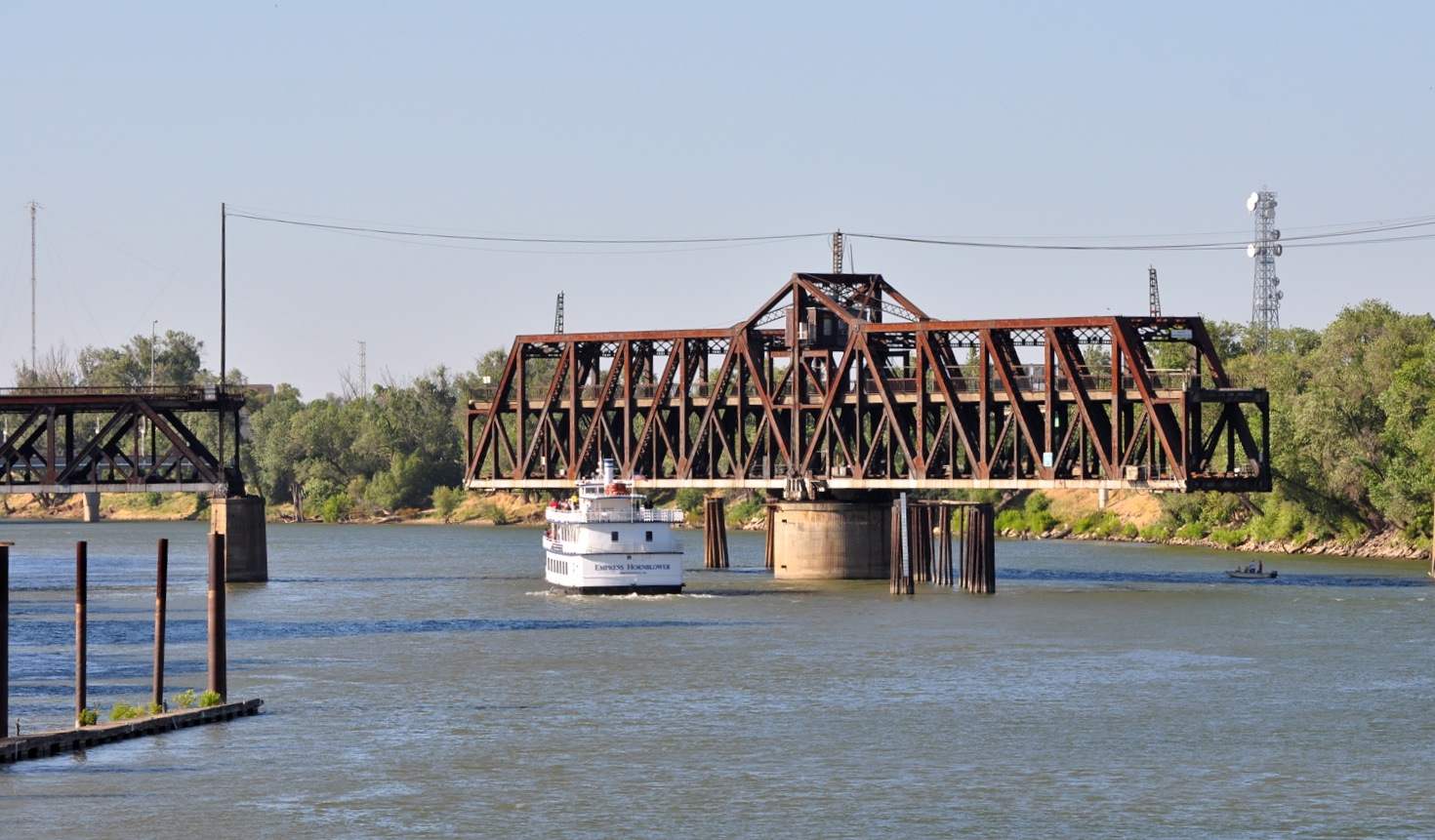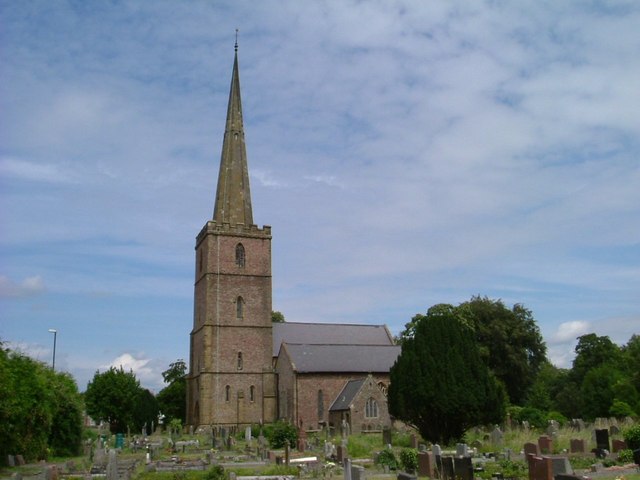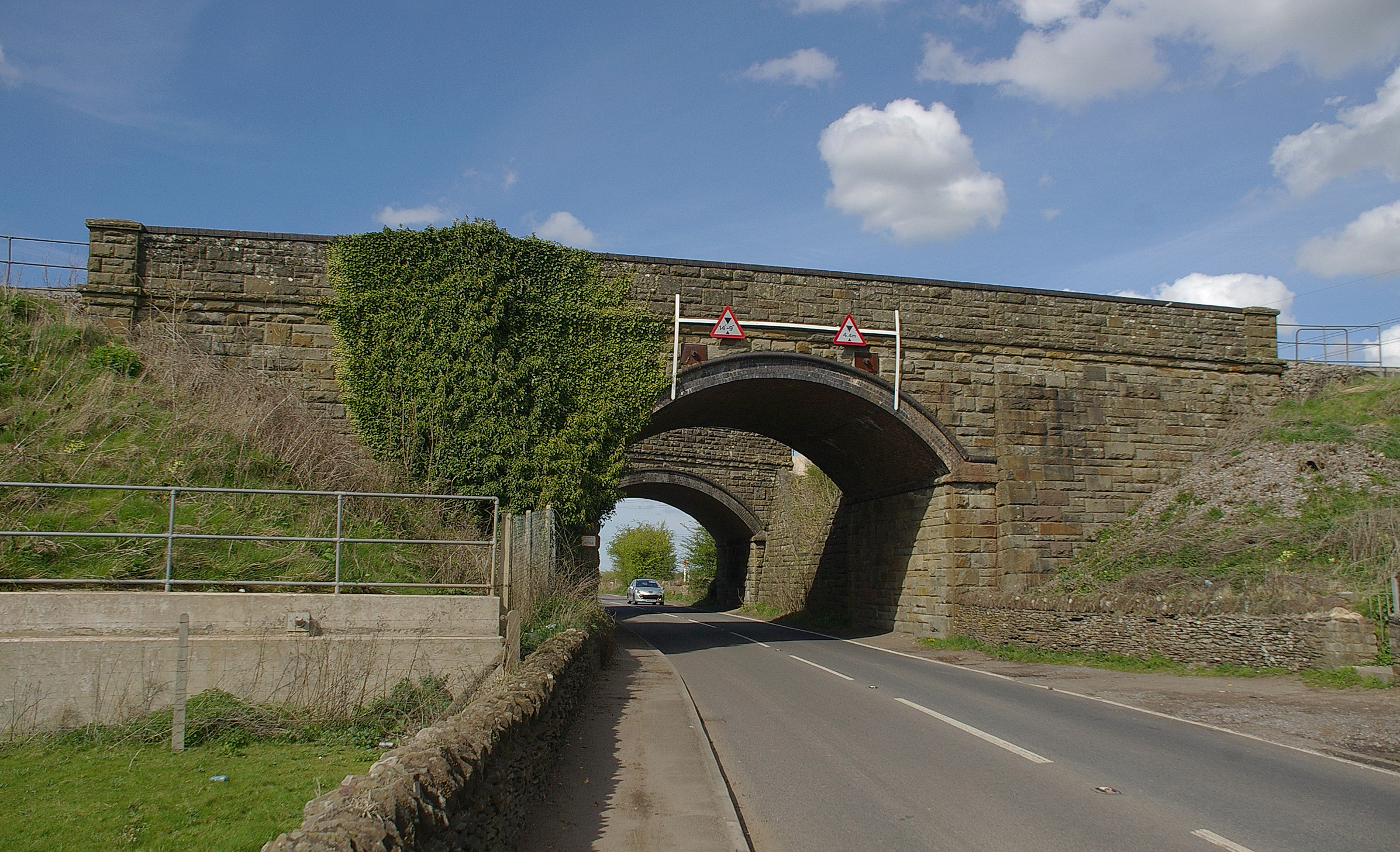|
Sharpness, Gloucestershire
Sharpness ( ) is a port in the civil parish of Hinton, in the Stroud district, in Gloucestershire, England, one of the most inland in Britain, and eighth largest in the South West England region. It is on the River Severn at , at a point where the tidal range, though less than at Avonmouth downstream ( typical spring tide), is still large ( typical spring). There is a small community of approximately 100 residents directly adjacent to the port, in addition to the subvillage of Newtown approximately 0.5 miles to the south-east. Four miles to the south lies the small town of Berkeley. Docks Sharpness docks began as a basin giving access to the Gloucester and Sharpness Canal. There were no port facilities at Sharpness itself and all traffic proceeded up the canal to Gloucester. The original Old Dock opened, with the canal, in 1827. The dock was separated from the Severn by a lock gate. The level of the basin varied for the hour or two for which the gate was open and so it was ... [...More Info...] [...Related Items...] OR: [Wikipedia] [Google] [Baidu] |
Hinton, Stroud
Hinton is a village and civil parish near Berkeley in Stroud district, Gloucestershire. The parish includes the larger villages of Sharpness and Purton. The ecclesiastical parish is Sharpness with Purton, formerly part of the parish of Berkeley and now united with Slimbridge. In the 2001 census the civil parish had a population of 1,141, decreasing to 1,083 at the 2011 census. See also * Hinton (place name) Hinton is a place name of Old English origin, and is a common English village name, particularly in Southern England. Village names often include a suffix, for example Hinton on the Green and Hinton-in-the-Hedges. The place-name is closely relat ... References External links Parish Council website Villages in Gloucestershire Stroud District Civil parishes in Gloucestershire {{Gloucestershire-geo-stub ... [...More Info...] [...Related Items...] OR: [Wikipedia] [Google] [Baidu] |
Swing Bridge
A swing bridge (or swing span bridge) is a movable bridge that can be rotated horizontally around a vertical axis. It has as its primary structural support a vertical locating pin and support ring, usually at or near to its center of gravity, about which the swing span (turning span) can then pivot horizontally as shown in the animated illustration to the right. In its closed position, a swing bridge carrying a road or railway over a river or canal, for example, allows traffic to cross. When a water vessel needs to pass the bridge, road traffic is stopped (usually by traffic signals and barriers), and then motors rotate the bridge horizontally about its pivot point. The typical swing bridge will rotate approximately 90 degrees, or one-quarter turn; however, a bridge which intersects the navigation channel at an oblique angle may be built to rotate only 45 degrees, or one-eighth turn, in order to clear the channel. Small swing bridges as found over narrow canals may be pivo ... [...More Info...] [...Related Items...] OR: [Wikipedia] [Google] [Baidu] |
Hulk (ship Type)
A hulk is a ship that is afloat, but incapable of going to sea. 'Hulk' may be used to describe a ship that has been launched but not completed, an abandoned wreck or shell, or a ship whose propulsion system is no longer maintained or has been removed altogether. The word hulk also may be used as a verb: a ship is "hulked" to convert it to a hulk. The verb was also applied to crews of Royal Navy ships in dock, who were sent to the receiving ship for accommodation, or "hulked". Hulks have a variety of uses such as housing, prisons, salvage pontoons, gambling sites, naval training, or cargo storage. In the age of sail, many hulls served longer as hulks than they did as functional ships. Wooden ships were often hulked when the hull structure became too old and weak to withstand the stresses of sailing. More recently, ships have been hulked when they become obsolete or when they become uneconomical to operate. Sheer hulk A ''sheer hulk'' (or ''shear hulk'') was used in shipbuildi ... [...More Info...] [...Related Items...] OR: [Wikipedia] [Google] [Baidu] |
TS Vindicatrix
TS or Ts may refer to: Businesses and organizations * Air Transat (IATA code TS), a Canadian airline * Tenaris (NYSE symbol), a global manufacturer of steel pipe products * Theosophical Society, religious philosophy * Tidewater Southern Railway (reporting mark TS), a former US railroad * Trabzonspor, a Turkish Football Club * Transcendental Students, a former radical student group at NYU * TS Ferries, an Estonian ferry line Linguistics * Ts (digraph), a digraph in the Latin alphabet * Voiceless alveolar sibilant affricate (, , or ), a type of consonantal sound ** Tse (Cyrillic) (Ц ц), the Cyrillic letter representing the voiceless alveolar affricate * Tsonga language (ISO 639 code: ts), of southern Africa Science and technology * Tensile strength, in materials science Biology and medicine * Transverse section, a term used in microscopy when prepared slide has a sample transversely dissected. * Thymidylate synthase, the enzyme used to generate thymidine monophosphate * Tourett ... [...More Info...] [...Related Items...] OR: [Wikipedia] [Google] [Baidu] |
Gloucester Harbour Trustees
The Gloucester Harbour Trustees are the competent harbour authority (CHA) for the tidal part of the River Severn from the Gloucester weirs ( Llanthony and Maisemore) down to seaward of the Second Severn Crossing, on the Welsh side of the Severn Estuary (north of Denny Island) from the Second Severn Crossing as far as Goldcliff, and on the River Wye up to its tidal limit (Bigsweir). History Pilotage of vessels in the Bristol Channel and Severn Estuary was overseen by Bristol until 1861, when Cardiff, Newport and Gloucester took concerted action because of the increase in the trades using the ports of Cardiff, Newport and Gloucester and petitioned Parliament to press for the passing of the Bristol Channel Pilotage Act 1861. This gave the ports the independence they sought. Pilotage commissioners were constituted for these ports with powers to license pilots for the non-compulsory pilotage of ships in the Bristol Channel and River Severn bound for these ports, each port having ... [...More Info...] [...Related Items...] OR: [Wikipedia] [Google] [Baidu] |
Canal & River Trust
The Canal & River Trust (CRT), branded as in Wales, holds the guardianship of 2,000 miles of canals and rivers, together with reservoirs and a wide range of heritage buildings and structures, in England and Wales. Launched on 12 July 2012, the Trust took over the responsibilities of the state-owned British Waterways in England and Wales. History The concept of a National Waterways Conservancy was first championed and articulated in the 1960s by Robert Aickman, the co-founder of the Inland Waterways Association, as a way to secure the future of Britain's threatened inland waterways network. The idea was revived by the management of British Waterways in 2008 in response to increasing cuts in grant-in-aid funding, a drop in commercial income after the 2008 financial crisis and growing calls by waterway users for a greater say in the running of the waterways. On 18 May 2009, launching 'Twenty Twenty – a vision for the future of our canals and rivers' on the terrace of the House ... [...More Info...] [...Related Items...] OR: [Wikipedia] [Google] [Baidu] |
Lydney
Lydney is a town and civil parishes in England, civil parish in Gloucestershire, England. It is on the west bank of the River Severn in the Forest of Dean District, and is 16 miles (25 km) southwest of Gloucester. The town has been Bypass (road), bypassed by the A48 road since 1995. The population was 8,960 at the 2001 census, decreasing to 8,766 at the 2011 census, and increasing to 10,043 at the 2021 census. Lydney has a harbour on the Severn, created when the Lydney Canal was built. Adjoining the town, Lydney Park gardens have a Roman Britain, Roman temple dedicated to Nodens. Etymology According to Cook (1906) the toponym "Lydney" derives from the Old English *''Lydan-eġ'', "Lludd's Island", which could connect it with the name Nudd/Nodens. However, more probable etymologies of Lydney are offered in other sources. A. D. Mills suggests "island or river-meadow of the sailor, or of a man named *Lida", citing the forms "Lideneg" from c. 853 and "Ledenei" from the 1086 Dom ... [...More Info...] [...Related Items...] OR: [Wikipedia] [Google] [Baidu] |
Severn Tunnel
The Severn Tunnel () is a railway tunnel in the United Kingdom, linking South Gloucestershire in the west of England to Monmouthshire in south Wales under the estuary of the River Severn. It was constructed by the Great Western Railway (GWR) between 1873 and 1886 for the purpose of dramatically shortening the journey times of their trains, passenger and goods alike, between South Wales and Western England. It has often been regarded as the crowning achievement of GWR's chief engineer Sir John Hawkshaw. Prior to the tunnel's construction, lengthy detours were necessary for all traffic between South Wales and Western England, which either used ship or a lengthy diversion upriver via . Recognising the value of such a tunnel, the GWR sought its development, tasking Hawkshaw with its design and later contracting the civil engineer Thomas A. Walker to undertake its construction, which commenced in March 1873. Work proceeded smoothly until October 1879, at which point significant flo ... [...More Info...] [...Related Items...] OR: [Wikipedia] [Google] [Baidu] |
Severn Railway Bridge
The Severn Railway Bridge (historically called the Severn Bridge) was a bridge carrying the railway across the River Severn between Sharpness and Lydney in Gloucestershire, England. It was built in the 1870s by the Severn Bridge Railway Company, primarily to carry coal from the Forest of Dean to the docks at Sharpness; it was the furthest-downstream bridge over the Severn until the opening of the Severn road bridge in 1966. When the company got into financial difficulties in 1893, it was taken over jointly by the Great Western Railway and the Midland Railway companies. The bridge continued to be used for freight and passenger services until 1960, and saw temporary extra traffic on the occasions that the Severn Tunnel was closed for engineering work. The bridge was constructed by Hamilston's Windsor Ironworks Company Limited of Garston, Liverpool. It was approached from the north via a masonry viaduct and had twenty-two spans. The pier columns were formed of circular sec ... [...More Info...] [...Related Items...] OR: [Wikipedia] [Google] [Baidu] |
Westerleigh Junction
Westerleigh Junction is a railway junction in Gloucestershire, England, where the Cross Country Route (XCR) from to Bristol Temple Meads meets the South Wales Main Line (SWML) from London Paddington to , near the village of Westerleigh. The junction is located between the stations of , and . Description The junction provides access from the SWML to the west and the XCR to the north. The lines cross Westerleigh Road in separate bridges, with a bridge over the old Bristol and Gloucester Railway, now a single line to a Murco depot, just to the west of the junction. The South Wales Main Line section of the junction was electrified with 25 kV AC overhead lines as part of the 21st Century upgrade of the Great Western Main Line. History The junction originated in 1903, when the Great Western Railway opened the Badminton Line, the direct route of the South Wales Main Line. The junction connected the eastbound SWML to the northbound Midland Railway The Midland Railway ( ... [...More Info...] [...Related Items...] OR: [Wikipedia] [Google] [Baidu] |
Bristol And Gloucester Railway
The Bristol and Gloucester Railway was a railway company opened in 1844 to run services between Bristol and Gloucester. It was built on the , but it was acquired in 1845 by the Midland Railway, which also acquired the Birmingham and Gloucester Railway at the same time. Legal and practical difficulties meant that it was some time before through standard gauge trains could run on the line; that only became possible in 1854 with the conversion of most of the line to mixed gauge and the opening of the Tuffley Loop. Even then the station at Gloucester was awkwardly sited, until in 1896 a through station was opened; it later became known as Gloucester Eastgate station. The Tuffley Loop and Eastgate station were closed in 1975. Part of the original line near Bristol was closed in 1970, trains being diverted over the ex-Great Western Railway route through Filton. However, the remainder of the route is in service currently as part of the busy Bristol to Birmingham main line. Earliest ra ... [...More Info...] [...Related Items...] OR: [Wikipedia] [Google] [Baidu] |
Great Western Railway
The Great Western Railway (GWR) was a History of rail transport in Great Britain, British railway company that linked London with the southwest, west and West Midlands (region), West Midlands of England and most of Wales. It was founded in 1833, received its enabling act of Parliament on 31 August 1835 and ran its first trains in 1838 with the initial route completed between London and Bristol in 1841. It was engineered by Isambard Kingdom Brunel, who chose a broad gauge of —later slightly widened to —but, from 1854, a series of Consolidation (business), amalgamations saw it also operate Standard gauge, standard-gauge trains; the last broad-gauge services were operated in 1892. The GWR was the only company to keep its identity through the Railways Act 1921, which amalgamated it with the remaining independent railways within its territory, and it was finally merged at the end of 1947 when it was Nationalization, nationalised and became the Western Region of British Railways. ... [...More Info...] [...Related Items...] OR: [Wikipedia] [Google] [Baidu] |







